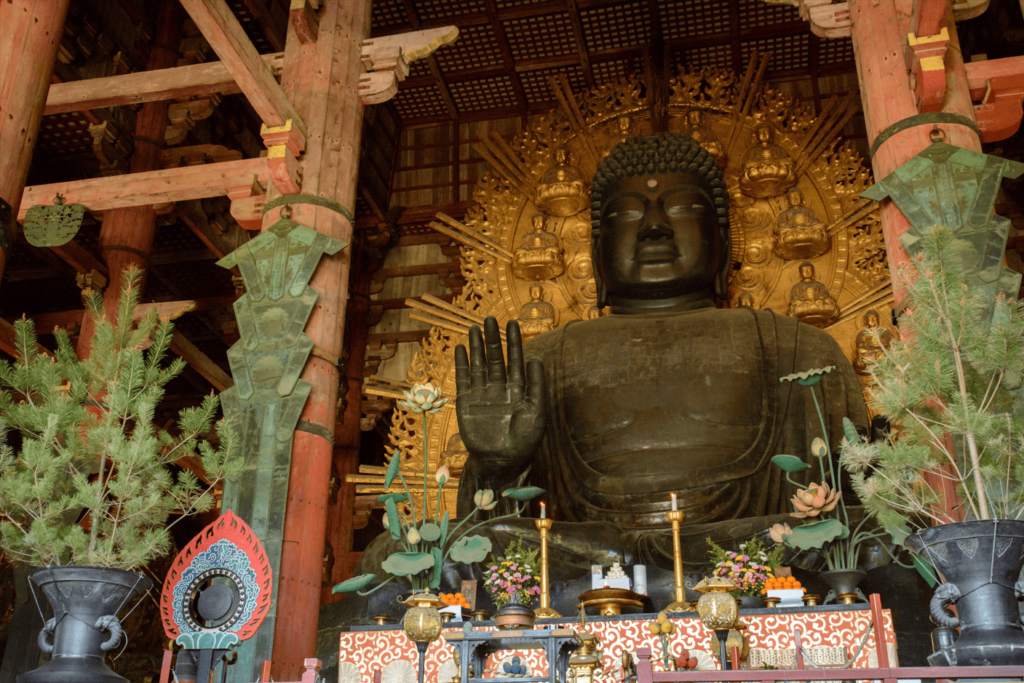Planning a Trip to Japan? Here’s How to Spot the Difference Between Shrines and Temples
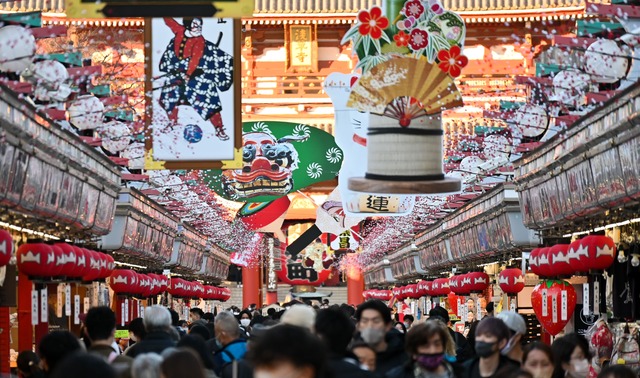
Japan is home to countless unique cultural experiences, and among them, “shrines” and “temples” are must-visit spots to immerse yourself in Japanese tradition.
One iconic tradition is Hatsumode—the first visit to a shrine or temple at the start of the New Year.
While it’s common to make this visit by Setsubun (February 3), have you ever wondered what sets shrines and temples apart?
Understanding their differences will definitely make your trip to Japan even more enjoyable!
The Differences Between Shrines and Temples
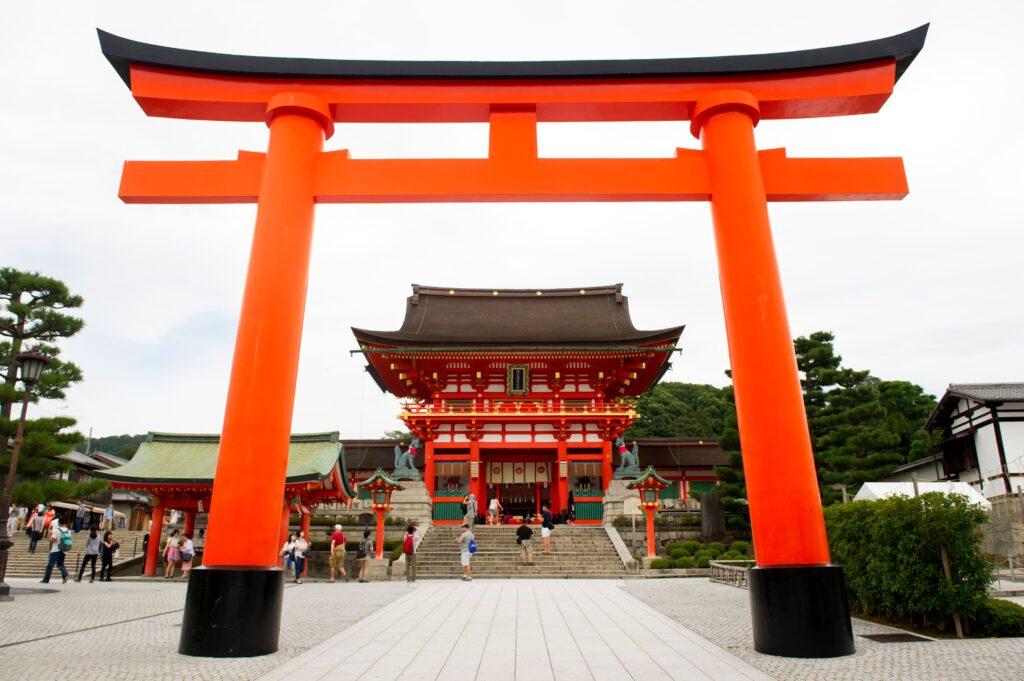 |
 |
| Torii gates | Main hall |
The key difference between shrines and temples lies in their respective religions. Shrines are rooted in Shinto, while temples are part of Buddhism. Both are deeply ingrained in Japanese daily life and cherished by the people of Japan.
|
Types |
Shrines |
Temples |
|
Religion |
Shinto |
Buddhism |
|
Purpose |
Places to enshrine and worship gods |
Places to house Buddhist statues and study teachings |
|
Features |
Marked by torii gates and traditional wooden architecture |
Known for five-story pagodas and main halls housing Buddha statues |
|
Events |
Visited on Hatsumode, Shichi-Go-San, etc. |
Visited on Obon, memorial services, etc |
If you spot Buddhist statues or graves, it’s safe to assume you’re at a temple. However, the main hall (where the Buddha resides) isn’t always visible…
So how do Japanese people distinguish between shrines and temples? The easiest way is to check for a torii gate—if there’s one, it’s a shrine; if not, it’s likely a temple.
How to Pray at Shrines and Temples
Did you know? Shrines and temples have distinct ways of praying.
How to Pray at a Shrine
・Step through the torii gate
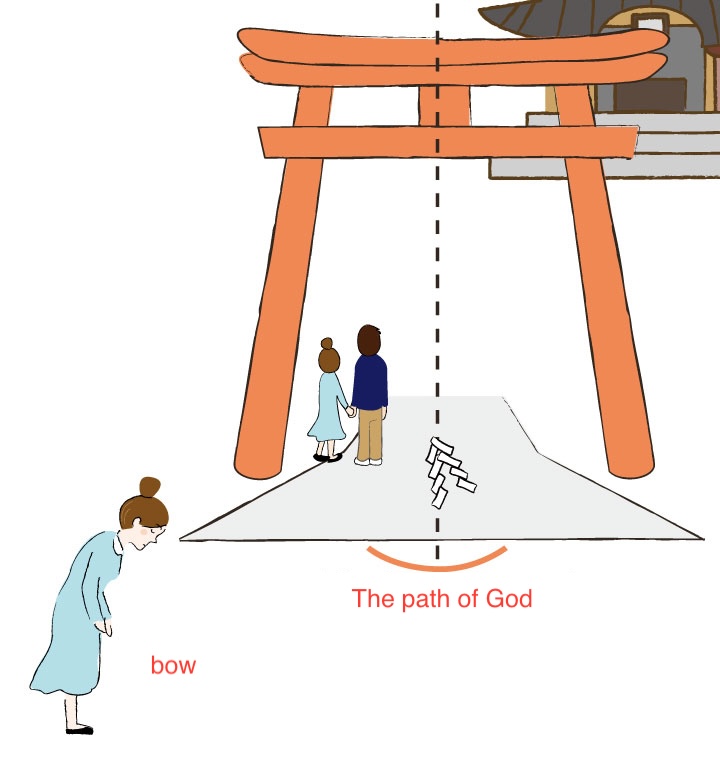
Source : https://www.izumo-shinwa.com/how_to_do.html
The center of the torii gate and path is where the gods pass, so stay to the sides as you walk.
It’s customary to bow before passing through the torii gate as a sign of respect.
Don’t forget to cleanse yourself at the temizuya (water purification basin).
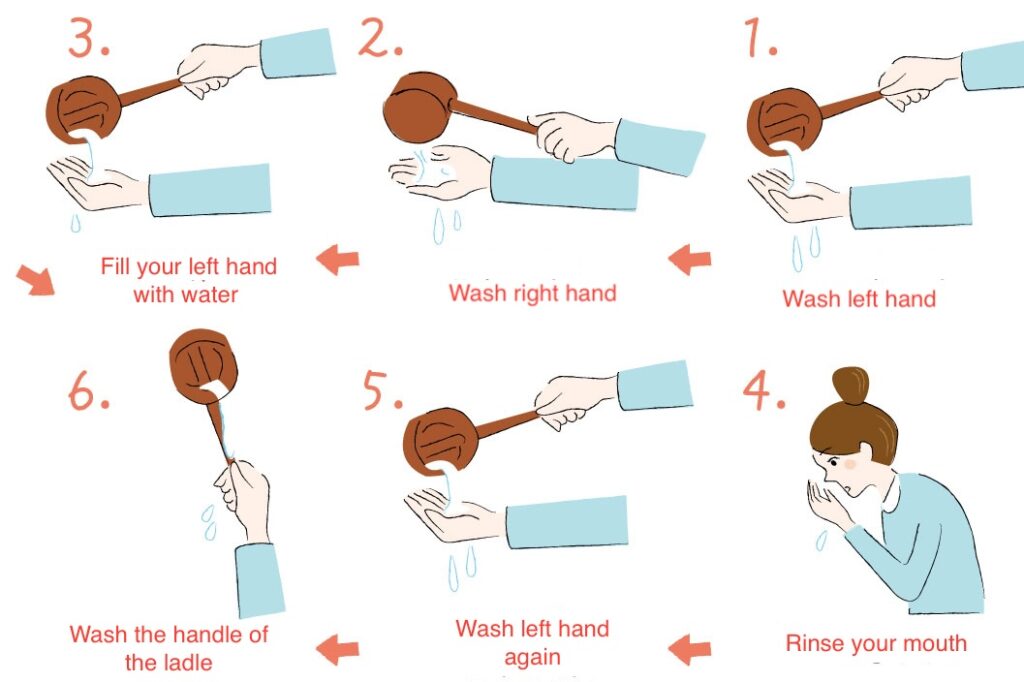
Source : https://www.izumo-shinwa.com/how_to_do.html
It might be challenging to perfectly follow the etiquette at the temizuya, but there are some key points to keep in mind.
One important point to remember is to avoid putting your mouth directly on the ladle. Not only is it unhygienic, but it is also considered bad manners, so be mindful of this.
・Make an offering
When visiting a shrine or temple in Japan, worshippers dedicate a certain amount of money to a deity or Buddhist statue as a ritual of thanksgiving, prayer, or offering. The money is usually placed in a money-offering box.
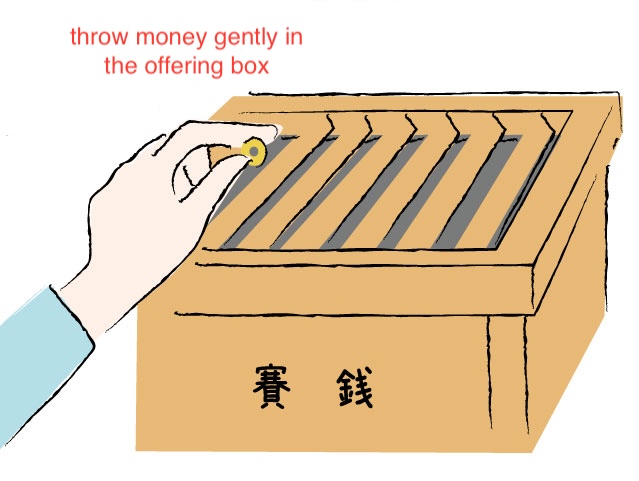
Source : https://www.izumo-shinwa.com/how_to_do.html
While there’s no set amount, many people choose symbolic amounts like 5 yen (go-en), as the pronunciation also means “good fortune” or “connection.”
At this time, if there is a bell, ring it to let the gods know you have come to pray.
・Two bows, two claps, one bow
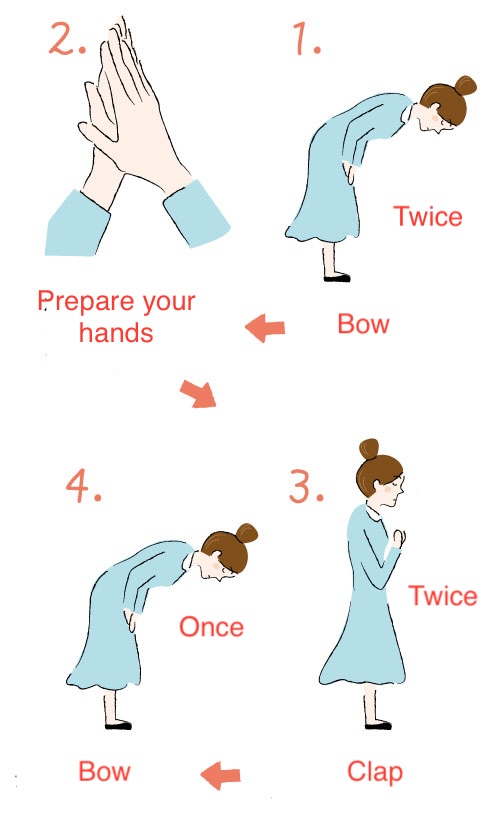
Source : https://www.izumo-shinwa.com/how_to_do.html
Bow twice, clap twice, and during the final bow, silently convey your wishes in your heart.
At some shrines, the practice may involve “two bows, two claps, and two bows.” However, this is usually clearly indicated, so there’s no need to worry.
How to Pray at a Temple
・Step through the temple gate (Sanmon)
の山門-1024x684.jpg)
The sanmon is the gate of the temple and serves as the boundary between our world and the world of Buddhism.
Just like at a shrine, the center of the gate and the path is reserved for the gods. Be sure to walk along the edges and bow once before passing through the sanmon.
・Offer incense or light a candle
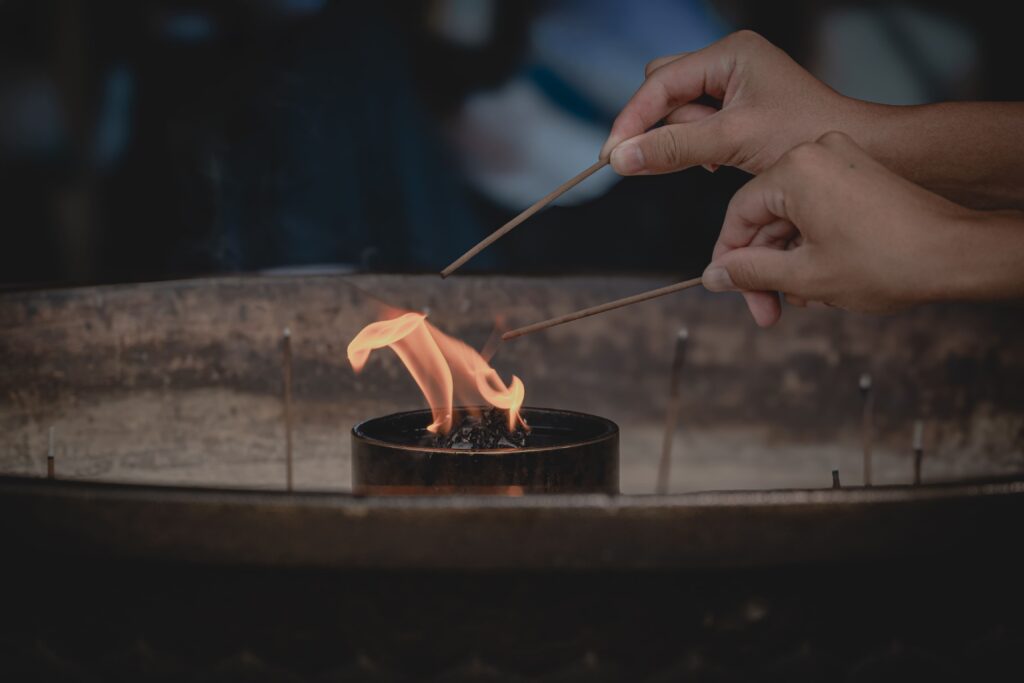
This is optional and can be offered if needed.
・Make an offering

Source : https://www.izumo-shinwa.com/how_to_do.html
If there is a bell, ring it once as well.
・Offer your prayers
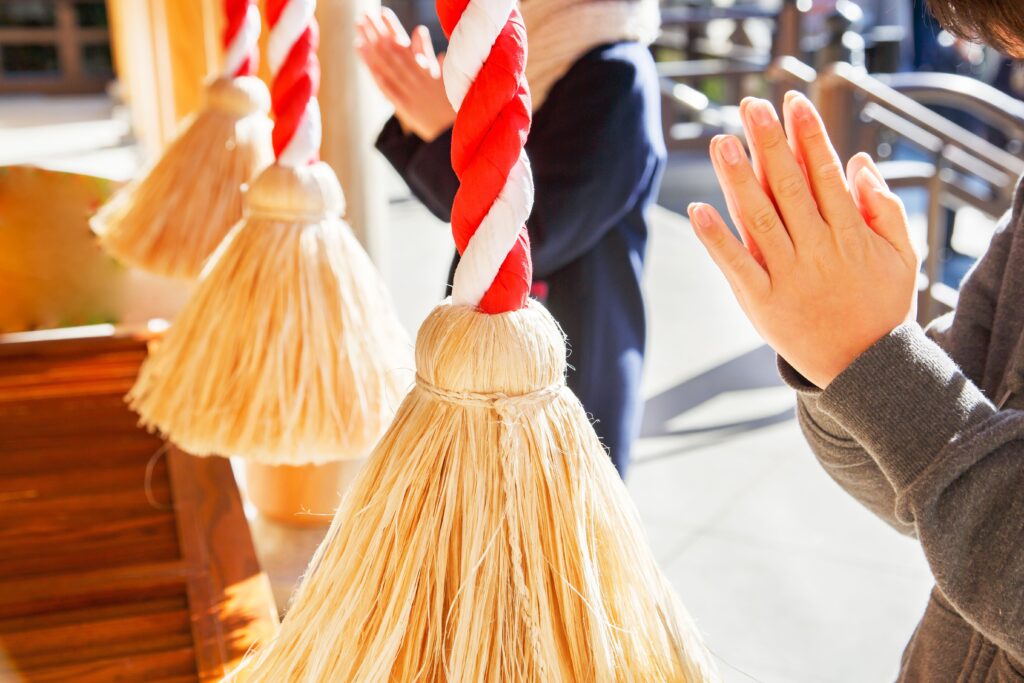
Place your hands together in prayer and quietly offer your thoughts.
The act of pressing your palms together (gassho) symbolizes unity between the Buddha’s world and humanity—a gesture of achieving enlightenment. Interestingly, this form of prayer is not practiced at shrines.
Summary
How was it?
The methods of prayer share many similarities, so once you learn them, they’ll be very useful.
The key difference is that at shrines, you follow the “two bows, two claps, one bow” ritual, while at temples, you quietly press your hands together in prayer.
Both shrines and temples have their own unique atmosphere and charm, so be sure to visit while respecting the proper etiquette!
You’re in for an extraordinary journey!
